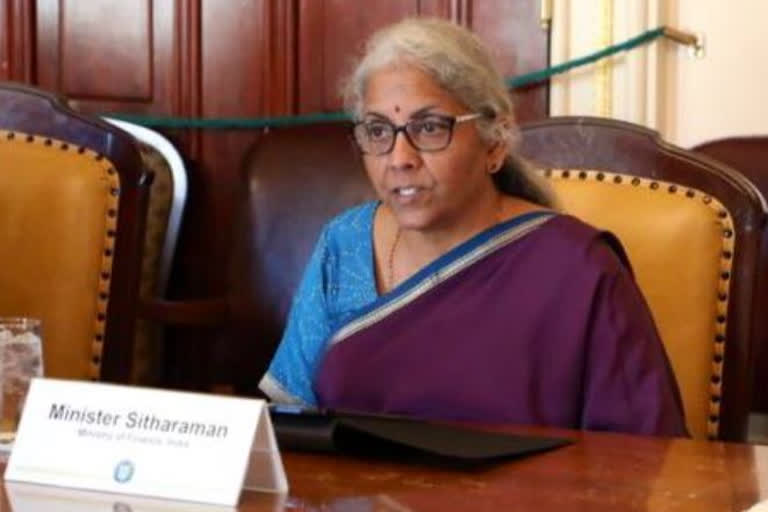Washington: Amidst reports of a global recession and downgrading of growth rates of almost all major economies, Finance Minister Nirmala Sitharaman on Tuesday exuded confidence on India's relative and absolute growth performance in the rest of the decade and forecast the country's growth rate to be around 7 per cent this financial year. Addressing a gathering here, Sitharaman said India's foundation for the ongoing successful recovery from the pandemic was laid when Prime Minister Narendra Modi took office in 2014.
"I am aware that growth forecasts around the world are being revised lower. We expect India's growth rate to be around 7 per cent this financial year. More importantly, I am confident of India's relative and absolute growth performance in the rest of the decade," she said. The minister, however, observed that the Indian economy is not exempt from the impact of swirling global currents. No economy is, she said.
After the unprecedented shock of the pandemic, came the conflict in Europe with its implications for energy, fertiliser and food prices. Now, synchronised global monetary policy is tightening in its wake. So, naturally, growth projections have been revised lower for many countries, including India. This triple shock has made growth and inflation a double-edged sword, Sitharaman said.
However, India has carved out its growth trajectory supported by the above-normal south-west monsoon, public investment, improvement in capacity utilisation, a broad-based revival in credit growth, strong corporate balance sheets, upbeat consumer and business confidence and receding threat of the pandemic, she underlined.
Broad-based growth in economic activity during the first quarter is also reflected in an improvement in employment, the minister said, adding that based on India's National Provident Fund Records, net payroll additions doubled in the quarter ending June 2022 compared to the corresponding period last year, with improvement seen across several industries. Sitharaman said economic policies take effect with a lag.
"Much of the work we had put in over the years are beginning to converge and coalesce; some have crossed their inflection point regarding their impact on the economy, she said. In India's scheme of things, addressing the ravages of the pandemic and preparing the economy for the medium term went hand in hand. The recovery from the pandemic is ongoing but is mainly complete. Several sectors have now exceeded their pre-pandemic activity level, she said, adding that domestic and international tourism is lagging, but they are closing the gap fast, she said.
"Both the pandemic and the consequences of the conflict in Europe meant that the government had to step in to shield the vulnerable segments of the population from multiple shocks. They had to be vaccinated quickly so that they could get back to work without fear of infecting others and being infected by others. When lockdowns meant the loss of incomes and livelihoods, their essential needs had to be met," Sitharaman said.
After the conflict started in February 2022, there was a sharp increase in food and energy prices. India had to ensure that the rising cost of living did not lead to lower consumption through erosion of purchasing power. We addressed these multiple and complex challenges through a variety of interventions. One, India ramped up its vaccine production and vaccination. India has administered over 2 billion doses of vaccine produced domestically. Two, India's digital infrastructure ensured the delivery of targeted relief.
We did not provide stimulus indiscriminately. Both monetary and fiscal incentives were measured and targeted. India's relatively better inflation performance and currency stability could be traced to that. Third, in 2022, after the conflict erupted in Europe, we ensured adequate availability of food and fuel domestically, lowered import duties on edible oil and cut excise duties on petrol and diesel. The central bank has acted swiftly to ensure that inflation did not get out of hand and that currency depreciation was neither rapid nor significant enough to lead to a loss of confidence, the minister said.
A UNDP study published in July 2022 shows that the proportion of each country's population falling into poverty due to soaring food and energy prices is low for India, owing to its well-targeted social protection measures, she said. (PTI)
